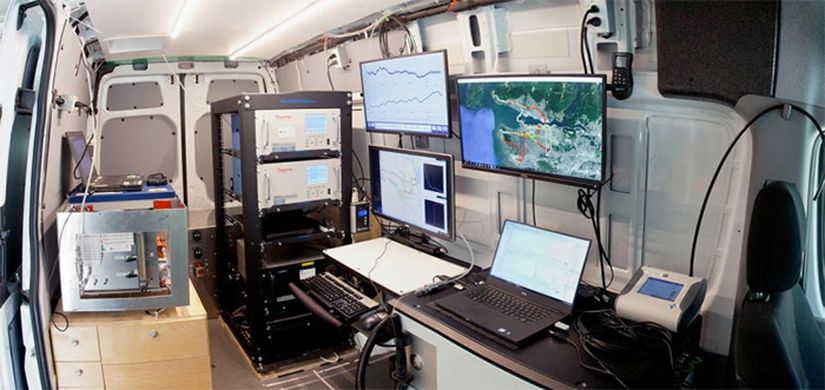Dr Erik Krogh presented on his advancements in the field of mobile spectrometry.
Broadly speaking, spectroscopy is the science of quantifying the chemical composition of a sample. There are a variety of specific methods for the analysis of specific media or for quantifying specific molecular species.
What most of those methods share is a key constraint – they are all lab based procedures. The advancements by Dr Krogh and colleagues are in bring not the samples to the lab (what is typically done) but in bringing the lab to the samples. The mobile laboratory that they have set up enables continuous realtime observations of the chemical composition of the atmosphere, and when hooked up to a point source hose in a stream, water.
This mobile sample capture and analysis has a number of benefits. Mostly the work done on spectroscopy involves a lengthy process of sample capture, collection of blanks, transportation of the samples and blanks to a lab where they are analyzed. This process has the potential for error to be introduced by sample decay in during transit, or by unobserved sampling problems due to low sample sizes.
This new quality of sample coverage across time and space allows for a new kind of analysis. One of the presenter’s key examples, the study of reaction kinetics in real time, seemed very analogous to a technological advancement in my field. The constant stream of samples during a reaction allowed them to specifically detail the reaction in a way not previously possible, given that the usual method was much more laborious, imprecise, and consequently less fully elaborated.
This is similar to the recent advancements in the field of animal biotelemetry. Telemetry collars on animals were historically equipped with very high frequency (VHF) radio transmitters. Biologists were required to relocate the collars in a time consuming, expensive, and laborious process that resulted in low resolution (in space and time) datasets of animal locations. Recent satellite collar technology allows a much higher resolution in time and space of animals locations. Biologists can sit in their warm offices and wait for the data to stream into their computers.
Both fields have recently acquired these qualitatively new kinds of datasets. I’m very curious to see what new kinds of questions can be answered with new kinds of methods, that were previously beyond reach. The presentation seemed to me a window into a whole new world of questions, many probably requiring new kinds of analysis to use the new data.
That being said, their sample collection methods seemed to ignore the basics of study design. The complete lack of independence between their samples, the obviously convenience-based data collection, and the unexamined time component all need addressing. I’m sure they’re equal to all those tasks, and I look forward to the new work their lab will produce.


Recent Comments